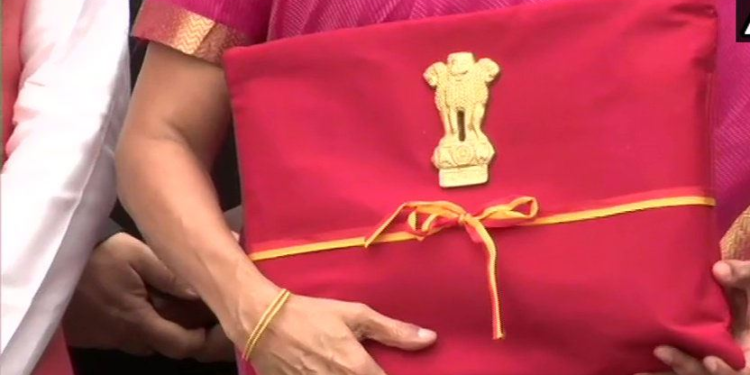Fifth of July, 2019 was a historic day for India on at least two counts. The budget was presented by India’s first fulltime female Finance Minister, Nirmala Sitharaman and secondly, the budget spells steady policy making, long term reforms and stability, packaged in a red bahi khata draping with a few surprises and incremental measures. One may be disappointed in absence of any so called big bang reforms and other sops, but a vantage view reflects definitive steps towards a bold long term vision of a resurgent India and promises continued progress on all work done and targets set during Modi government’s first term.
The Economic Survey made a very interesting proposition for a nudge through behavioural economics and incentives to trigger growth and development. The Budget indeed provides specific policy nudges at the right place to unleash a virtuous cycle of income, consumption and investment. As the budget speaks loud, realizing the vision of becoming a 5 trillion dollar economy by 2024, is likely to be achieved ensuring impetus to socio-economic growth while also ensuring tight fiscal discipline and sustainability.
The budget also indicates another positive trend, the government assuming the role of an enabler, maximising governance and minimising government. This particular nudge is apparent in the case of increased role of Private Public Partnership in key sectors. For instance Indian Railways will depend heavily on PPP projects for growth along with adoption of PPP in metro rail projects. The first budget of the second term of Modi government recognizes that the solution lies in innovative approaches, ambitious projects and collaborative approach.
Further, the budget also gives a massive nudge to connectivity in the nation to ensure greater and affordable mobility and inclusive development and participation. From efforts towards attaining inclusivity in aviation sector by leveraging India’s engineering advantage to focus on developing inland waterways as part of Jal Marg Vikas Project for using rivers for cargo transportation – a move that will decongest roads and railways. The investment target of ₹80,250 crore for phase III of the Pradhan Mantri Gram Sadak Yojana, to build 1,25,000 km of village roads is also an important move towards inclusive development.
A notable move has been push for sustainability through faster adoption of electric vehicles by way of offering upfront incentives on purchase of electric vehicles and funding the Inclusion of solar storage batteries and EV charging infrastructure in the country. This nudge will encourage adoption of this technology by consumers which would require both education and a change in attitude. The consumer adoption of this technology requires not only education but changing attitudes to make it an attractive, affordable and environment-friendly public transportation option for the common man.
Yet another sector we see a nudge by Modi government to trigger development is women empowerment. It is for the first time that the budget recognised the role of women as entrepreneurs and focussed on their financial empowerment. Here we see a nudge to change the national discourse on women empowerment from social upliftment to financial independence and leading the economy of the nation. Finance Minister Sitharaman highlighted the role played by several schemes and initiatives such as MUDRA, Stand up India, and self-help groups (SHGs), which empowered women entrepreneurship in the past five years and proposed to expand the women SHG interest-subvention programme to all districts and provides that to every verified women SHG member with Jan Dhan account, an overdraft of 5000 will be given and one woman in every SHG will be made eligible for loan upto one lakh under MUDRA loan.
Yet another nudge to effect a long term change is the innovative measure of capital market for the masses. The budget signals a stock exchange for social sector enterprises to enable them to raise funds like equity, debt or even units. The move will be instrumental in lifting social enterprises and voluntary organizations. This will add an important leg in India’s economic growth trajectory by capitalizing on the potential of social enterprises to pitch for sustainability, innovate for local development, employment creation and development of social capital.
The first budget of Modi government’s second term might be short on immediate gains but is promising when it comes to long term goals. The key is to adopt policy pragmatism to ensure successful implementation of the planned objectives.































